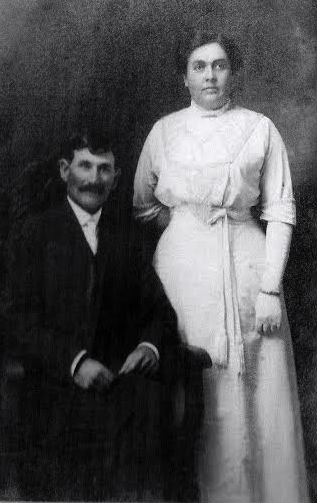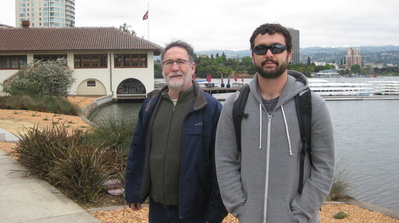My name is John Elson and I grew up on a farm in Eastern Iowa. I was born in Vinton Iowa, the son of Van and Mary Johnston Elson. I never knew my maternal grandparents. Grandma Johnston died before I was born and Grandpa died shortly after. My mom always said we were part Cherokee, but we identified as white folks in a white community. Mom’s ethnicity of choice was Irish, and she learned songs from her father that were passed down from his parents and grandparents who came from Belfast. Mom also said that grandma had moved from Indiana and had fond memories of living there. For many years that was the extent of my knowledge.
I was curious to find out more about the Cherokee story, but my cousin Larry (who lives in California) was even more curious and he researched the family origins in Indiana. We knew our grandmother's birth name was Cleo Desdemona Roberts and she was born in Sheridan, IN in 1880. Her parents and siblings moved to Iowa in 1898 and settled on a farm in Jefferson County in the SE part of the state. After making a phone call to the Sheridan newspaper and learning about the mixed-race settlement in Hamilton County, Larry was able to find out a great deal more in the 1990's, especially with the advent of Internet searching. He e-mailed me a list of sources and I started reading about the Roberts Settlement. It was a revelation to sit down with Steve Vincent's book, "Southern Seed, Northern Soil" and read in the opening pages about my great, great, great grandfather Willis Roberts, who was torn between remaining in North Carolina, where the rights of people of color were being restricted in the aftermath of the Nat Turner rebellion, or moving to Indiana to face new challenges and opportunities. I went back and found additional writings about the Roberts Settlement, the article in Ebony from November 1951 and the thesis written by Edgar Conkling, who interviewed Carl Roberts, the successful surgeon and family genealogist.
When you add the scores of newspaper and magazine articles, there is enough reading to keep busy for months, or years if you expand the quest to include related material on African American history. “The Invisible Line” by Daniel J. Sharfstein, documents the stories of 3 different families and their journey from black to white, and I recommend this book for anyone interested in the topic of passing. We follow their family stories over time, stories with drama, suspense and poignancy. I can only imagine what my great grandfather and family experienced, and much of their story has been hidden and lost. While passing can be a sensitive issue for a few in our family, I think attitudes have changed over time and I know that many of the cousins I know from Iowa embrace and celebrate our ancestry.
As fate would have it, Steve Vincent and his wife moved to Iowa City and our paths crossed at coffee hour after church. I am grateful for his never ending enthusiasm for all things related to the Roberts Settlement history and for Steve’s willingness to share his knowledge.
I have learned about relatives who were successful in law, in the clergy, as well as other professions. Judge Milton Arrah Roberts was my great-great uncle, who moved to Iowa before his brother, my great grandfather, Charles Sylvester Roberts did. Their father Elias reportedly donated the land where the chapel and cemetery are. My great-great grandfather Abram Brown, a civil war veteran who served in the 28th Colored Infantry, settled in Kokomo, Indiana and ran a boarding house for black residents and visitors. The Noblesville library and the Howard County library in Kokomo have been wonderful sources of information. The new webpage is great and the short film is very inspirational. Thanks to all who work to keep the Roberts legacy alive.
John has made several visits to our Roberts Homecoming. He is a descendant of Charles Sylvester Roberts, son of Elias Roberts and grandson of Willis Roberts.




 RSS Feed
RSS Feed